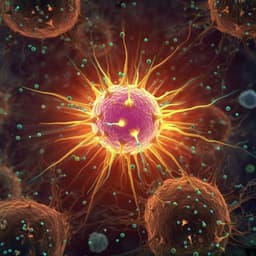
Biology
Focused ultrasound excites cortical neurons via mechanosensitive calcium accumulation and ion channel amplification
S. Yoo, D. R. Mittelstein, et al.
Discover the groundbreaking mechanisms through which focused ultrasound (FUS) excites mammalian neurons! This research by Sangjin Yoo, David R. Mittelstein, Robert C. Hurt, Jerome Lacroix, and Mikhail G. Shapiro reveals how calcium-selective, mechanosensitive ion channels play a crucial role in neuronal excitation without the need for cavitation or temperature changes.
Playback language: English
Related Publications
Explore these studies to deepen your understanding of the subject.







